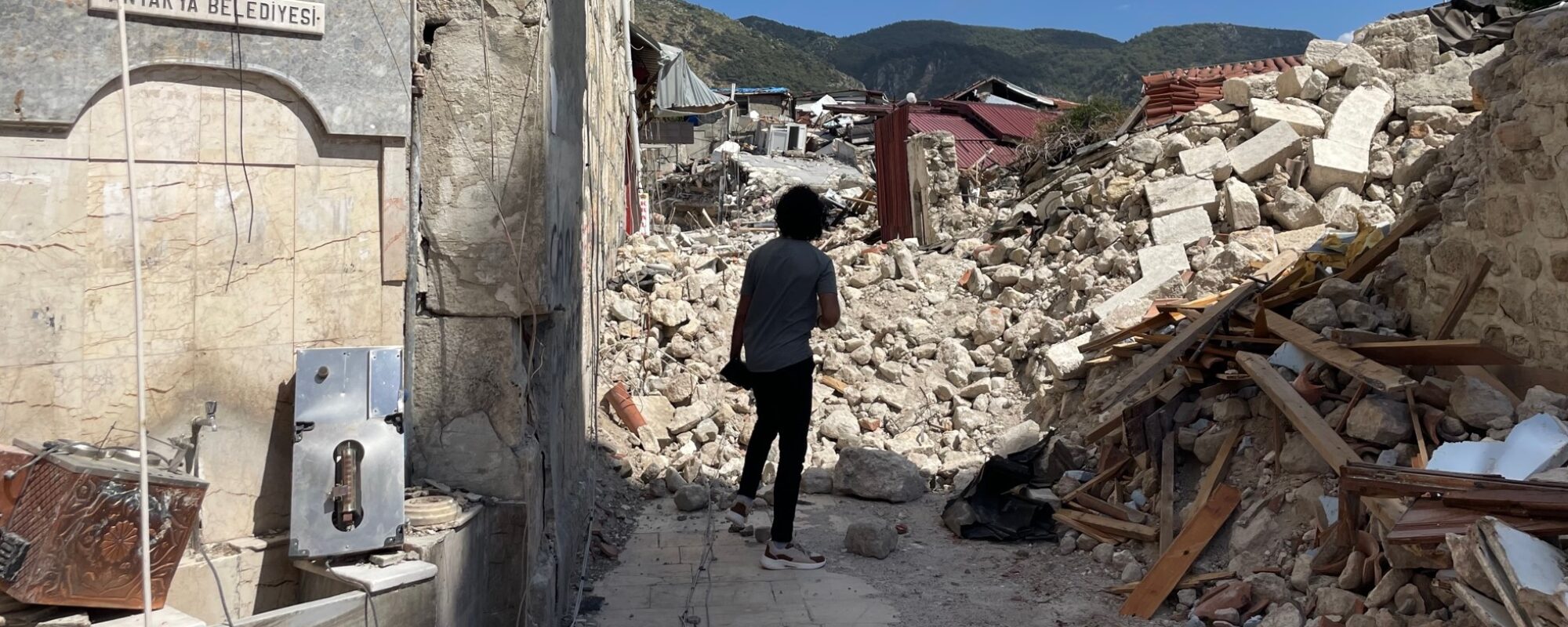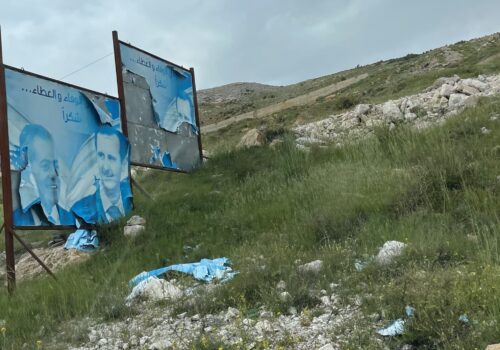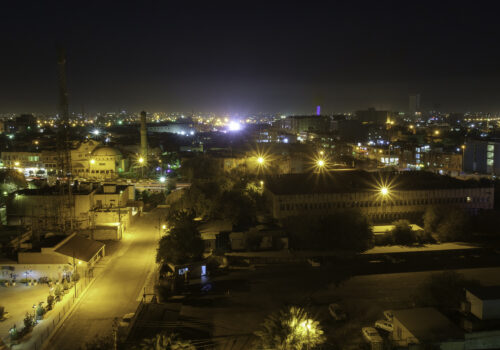ANTAKYA, Turkey — Seyfeddin Selim was late. By the time he arrived at his grocery shop after earthquakes had devastated this city on February 6, everything had already been looted.
Adding insult to injury was the blame that followed.
“A Turkish man later told me that Syrians were the reason for the earthquake. But I couldn’t say anything,” he recalled, saying he feared any altercation could lead to his deportation.
One of 350,000 Syrian refugees living in the city prior to the earthquake, Seyfeddin never actually saw a future for himself in Hatay’s capital. He would have left earlier but couldn’t afford to. Crossing the sea to the European Union costs about $9,000. The earthquakes reduced his chances even further.
“Now I am even worse off,” he said.
It has been a tough year in Turkey, and the Syrians in Antakya may have been hit hardest of all. Six months after the earthquakes, the walls are still collapsing around these refugees. Still, the options in front of them remain the same: return to Syria, try to remain in Turkey or find a way to cross the Mediterranean.
The outlook in Seyfeddin’s city has been in a tailspin due to larger events in Turkey, too. The year started with officials from Ankara and Damascus meeting for the first time since the Syrian war began. At the top of the agenda was “safe” returns, or perhaps their simulcrum, but it was not exactly a vision shared by refugee Syrians themselves.
In fact, Syria is anything but safe because of state-sanctioned abuses and disappearances, property confiscations, infrastructure ravaged by war and an economy that has hit an all-time low. Advocacy groups report that the Turkish authorities have coerced Syrians to sign “voluntary-return” forms
Then came the earthquakes, which flattened Antakya and led to the re-displacement of many Syrians living there. Humanitarian aid to the city was delayed for days, and international assistance overall has been unable to meet widespread needs.
Turkish and Syrian denizens alike told me that Antakya is first in need but last on the government’s list—perhaps because of the scale of the destruction or the fact that Hatay has always been geographically, linguistically, culturally and politically separated from Anatolia, poking deep into Syria like a thumb. Although President Recep Tayyip Erdogan promised to rebuild every destroyed home within a year, Antakya remains a “ghost town,” one Syrian told me.
Syrians say discrimination is at play and that they are being overlooked in aid distribution to push them to return to Syria. One aid worker, who requested anonymity, said Syrians will not receive mobile container homes until all Turks get them first. Meanwhile, displaced Syrians are living on private lands, parks and even below the cave Church of Saint Peter, one of Christianity’s oldest.
Many have used whatever they could find—nylon, sticks, pipes—to build shelters. They wait for unpredictable donations. One evening, I walked by a cluster of tents where Syrians sat on the other side of a well-lit, fenced-in encampment for Turks.
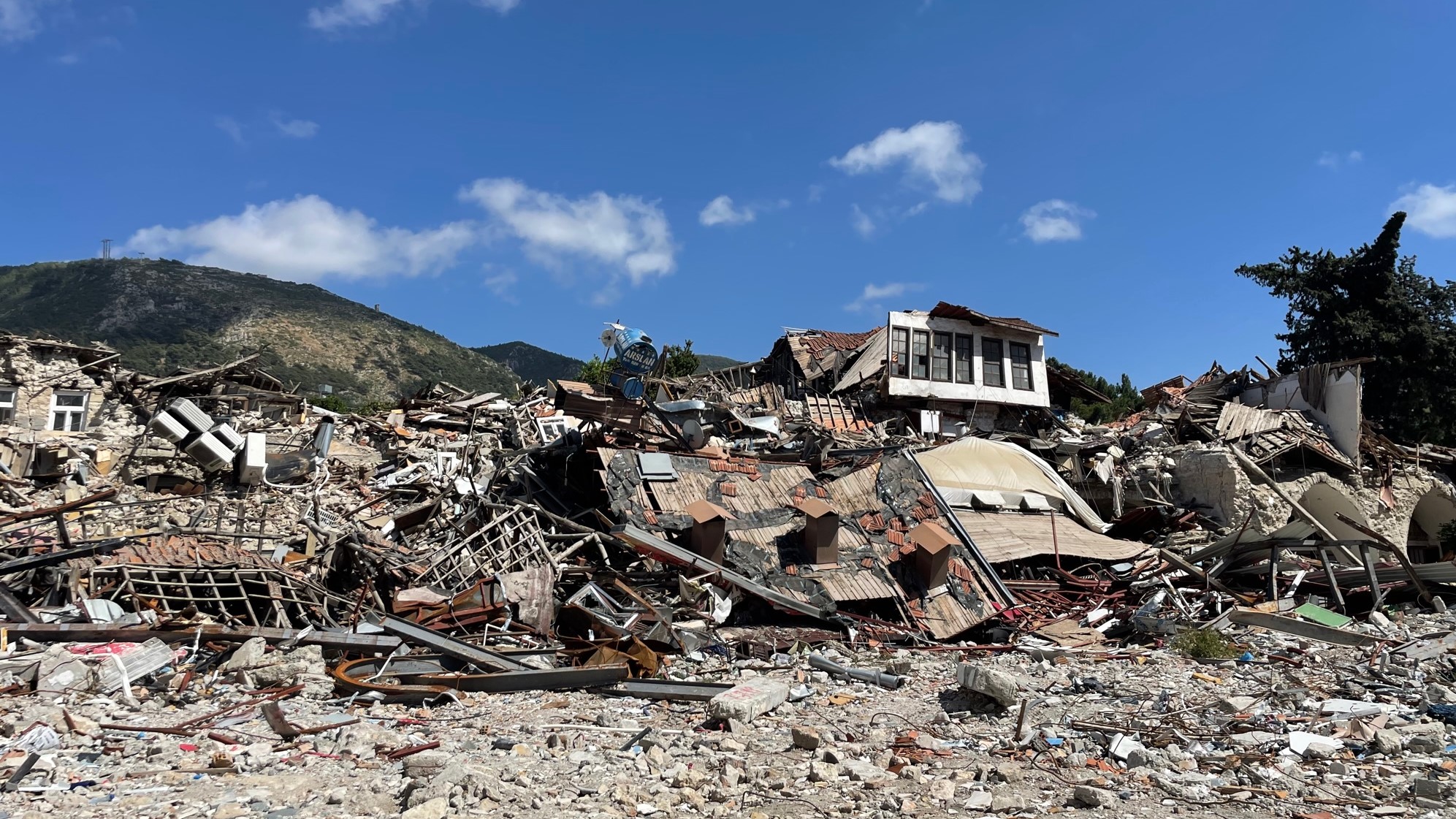
Politically, the natural catastrophe has served as a catalyst for long-shunned Syrian President Bashar al-Assad to return to the regional fold, with countries eager to work with him to stem Syria’s outflow of civilians (and narcotics), despite the blood on his hands.
Now displaced Syrians are the region’s new bête noire.
At a sidewalk shop that sold coldish drinks and strong coffee, Malik Kurdi, a defected Syrian naval officer, explained a dirty game. The wind swept up dust from piles of debris, and it swirled in the air as he spoke.
“Assad released Al Qaeda prisoners, drugs and refugees to distract people from the head of the snake,” Mailk said. He likened the Syrian leader to the notorious former Colombian drug lord Pablo Escobar.
An expert at self-advancement at the cost of his own people, Assad has adroitly manipulated the optics of the earthquake in his favor. For the first time in over a decade, he attended an Arab League Summit in Saudi Arabia in May. His government now holds regular meetings with Turkey, Russia and Iran to promote the return of refugees.
In the spring, post-earthquake grief gave way to an ugly election campaign in Turkey in which Syrians were in the spotlight, scapegoated as a socioeconomic burden. Locals cite their high birthrates and a popular conspiracy theory saying the government wants to remake the anomalous demography of Hatay. In March, Kemal Kılıçdaroğlu, the opposition presidential candidate, traveled here to reaffirm that his first order of business would be to deport all Syrians. Ultranationalists toured Antakya, taunting Syrians, to show voters what they would do once in office.
For those who remain, there are few good options. No one could imagine returning to Assad’s Syria.
Such polarization had real impact, pushing society as a whole further to the right. During the first round of voting, a quarter of Turks voted for nationalist parties for parliament, and the success of a third-party xenophobic candidate named Sinan Oğan sent the presidential election into a heated second round.
Malik Kurdi said that period was even more stressful than the earthquake.
In the run-off, Kılıçdaroğlu switched gears—from his earlier adoption of heart-shaped emojis in a campaign of acceptance—and said the quiet part out loud. To try to peel votes away from Oğan, he promoted far-right ideas from the fringes, and his billboards read, “Syrians will go.”
When Erdogan defied expectations and won the election—espousing a mélange of state power, religion and nationalism—Syrians breathed a sigh of relief. They say Abu Bilal will protect them for another five more years, or more.
In his victory speech, however, Erdogan said he would send a million Syrians back within a year. Syrians in Antakya told me that he could mean them, due to their proximity to the border, lack of housing, and the growing hostility toward their community. They are applying for Turkish citizenship, paying bribes to get necessary documentation or enrolling in universities. Anything to avoid being sent back.
Khaled Amr sat with his wife on the floor in a makeshift blue tent next to the uninhabitable white apartment building where he previously lived.
“My only happy memory this year is that Erdogan won,” he said.
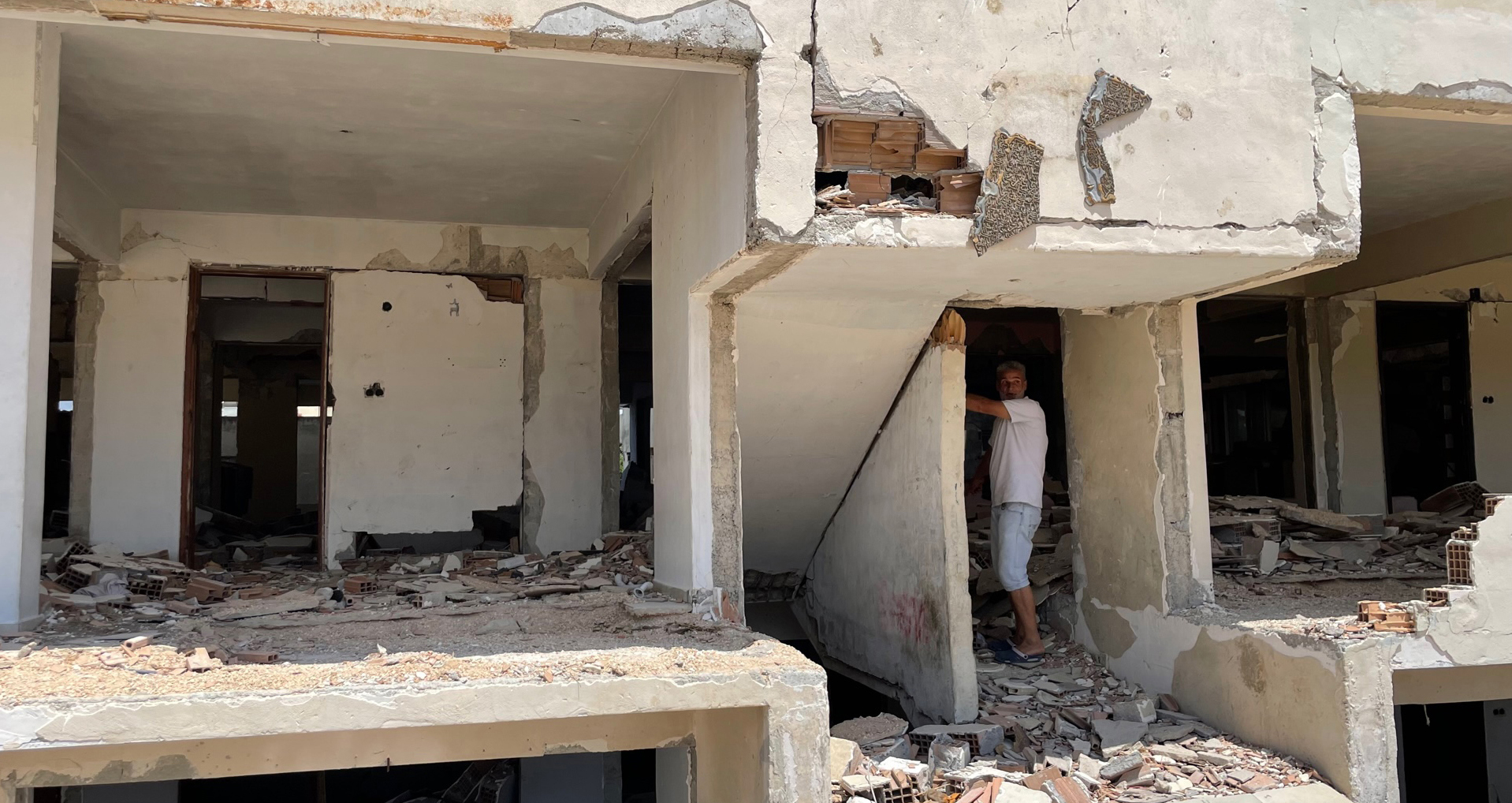
A June quartet meeting of Turkey, Syria, Russia and Iran in Astana, Kazhakstan—aimed at normalizing Syrian-Turkish relations—did not phase him. It’s just a stunt, a trick to outflank opponents, Khaled said. Erdogan is the Syrians’ only ally, he said.
Khaled and other Syrians in Antakya have embraced the president as their greatest hope for remaining in Turkey. Is it denial or faith? Are Arabic-language media outlets linked to Turkey and its oil-rich ally Qatar downplaying rapprochement between Syria and Turkey? Or is he simply the lesser of a bouquet of evils?
Antakya’s Hama Social Club sits in the city’s northern outskirts. Started by displaced Syrians, the club hosts Arabic lessons and ping pong for Syrian youths, while adults chat with old neighbors and establish new ties in their temporary home. The Orontes River connects Antakya to their native city, Hama.
In the wake of the earthquake, the club—left unscathed—became a shelter, a kitchen, a distribution center for medicine and blankets and a hub for a community to support itself. It was a bit of respite from repressive or unresponsive governments. Syrians from all walks of life sat out in the open, played cards and drank coffee and tea when I visited. Through metal straws, they sipped on matte, a drink Levantines brought back home following earlier waves of migration to Latin America.
Om Luay, an elderly widower, sat waiting on one of the club’s benches. Back in 2015, she had applied for resettlement to Germany, where two of her daughters live, without progress—until this year, when the natural disaster was enough to get her file moving. Last month, she finally received a call to expect an interview soon. The development came on the heels of tragedy: the earthquake killed one of her daughters along with her family here in Antakya. Om Luay waited six days in the cold to identify the bodies.
Waiting for anything else is easy by comparison, she said.
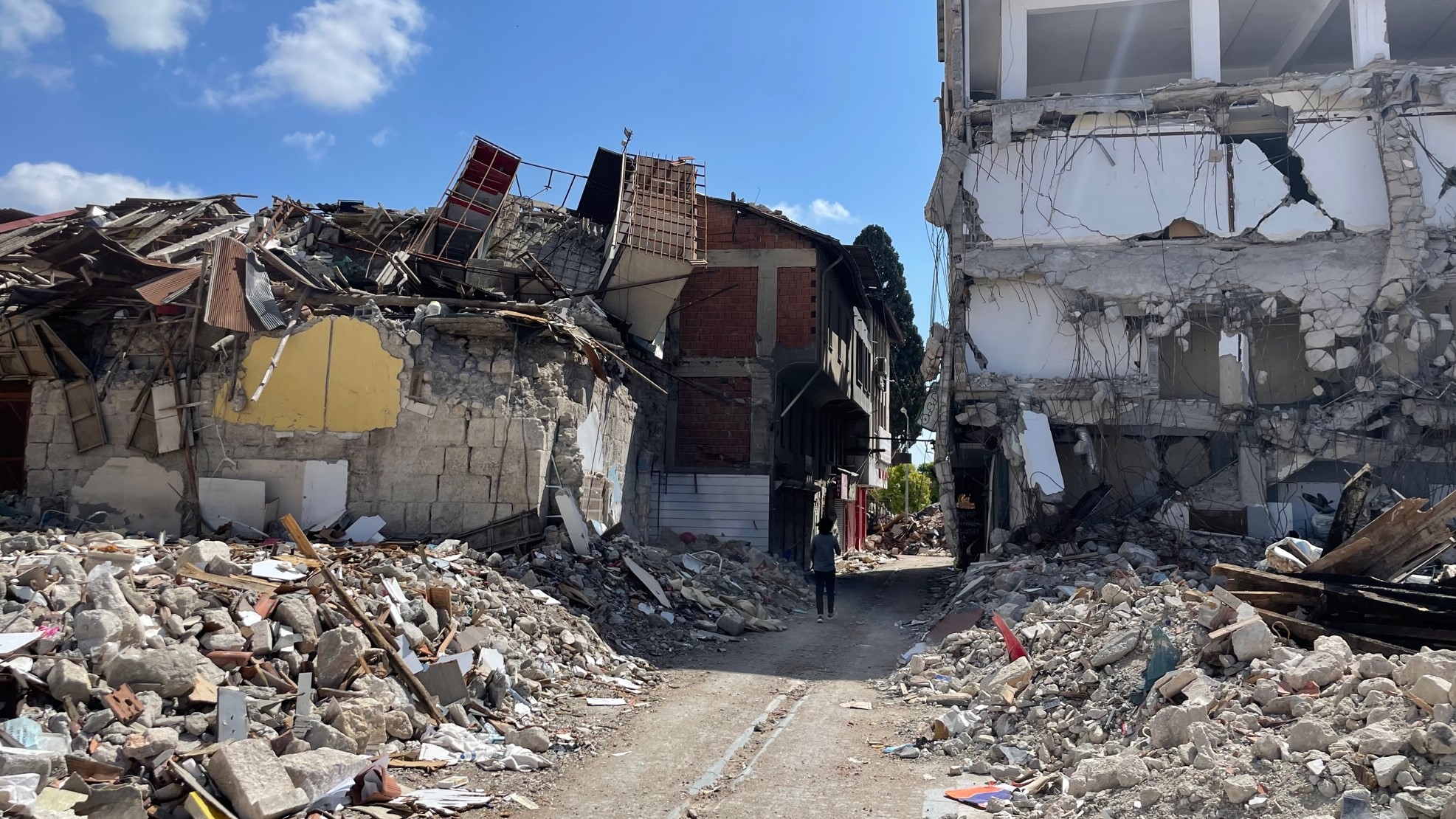
The club offered her temporary shelter until the Muslim holiday Eid al-Adha the following week, and she was unsure where to go next. She could not afford rent, had not received container housing and felt too old to stay in a makeshift tent.
“We are lost now. We have no place to go,” she said. “We cried last Eid remembering my daughter. We aren’t finished crying.”
“No one wants to stay here, but they have nowhere else to go,” Sobhi Deiri told me on the other side of the courtyard.
The 20-year-old had formative experiences here over the past five years, but everything he and his family had built has been destroyed. Loss loomed over him as he showed photos of 20 classmates killed in the earthquake.
Still, Sobhi is staying busy, preparing for two examinations he hopes will enable him to enroll in medical school in Istanbul this fall. If that happens, he won’t return.
But some Syrians seem to want to remain and have joined in helping in Antakya’s slow recovery. Groups of Syrian men dot major roads, waiting for daily work removing rubble. Money changers, key smiths and coiffeurs operate out of campers.
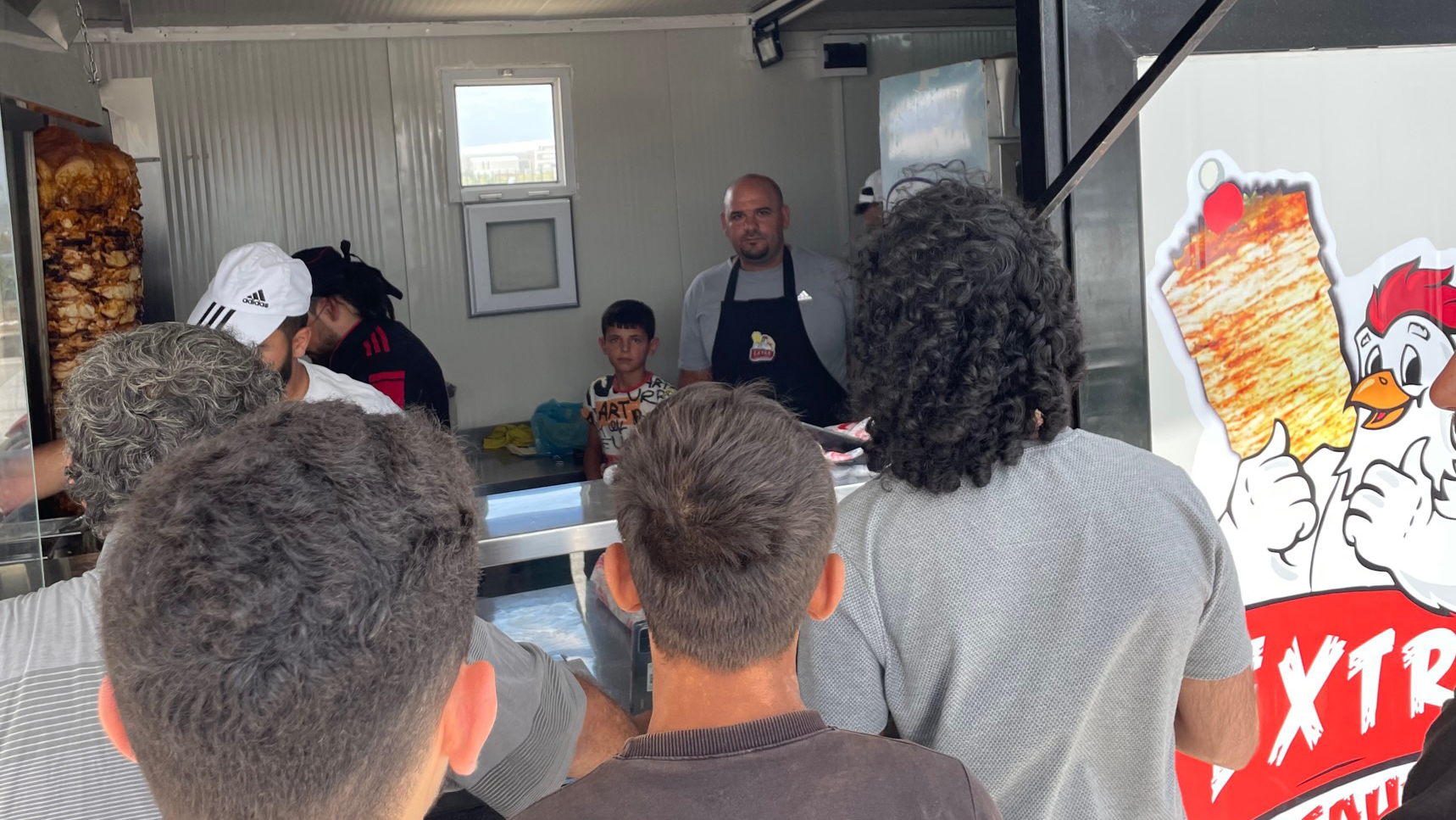
At a crossroads of camps, Ghiath Safya poked his head out of his kitchen at the buzzing Extra Restaurant. Prior to the quake, his shawarmas were some of the most popular in town.
That day was the first in five months they were available, sold from a refurbished container Ghiath had bought. One customer ordered 100 of them. Men smoked cigarettes, a boy popped wheelies on his bike and a little girl pranced around in a tiara.
After the dinner rush, Ghaith sat in front beaming, happy he had completely sold out for the night.
“I did not feel as sad when I had left Syria as when I left Antakya,” he said about his sojourn away from his adopted city after the earthquake. He returned last month.
For the Syrians who remain, there are few good options. No one I spoke to could imagine returning to Assad’s Syria due to safety concerns.
Amid the rubble in Antakya, the elderly pray for Turkish citizenship while the young try to navigate stubborn labor and movement restrictions to find work and make their way to Europe. Irregular Syrian migration has reportedly increased 150 percent.
On my final morning in Antakya, I sat with grey-haired Abu Bashir, a retired military officer, in his floral-trimmed tent. He still anticipates brighter days to come.
Everything had started off well for him this year, but then fate turned cruel with the earthquake and the election. Without patience, he would have died a long time ago, he told me.
“We must stay optimistic,” he said. “Life goes on.”
Top photo: The earthquakes left nearly 3 million people in need of shelter. Six months on, displaced Syrians continue to search or wait for safe housing options

